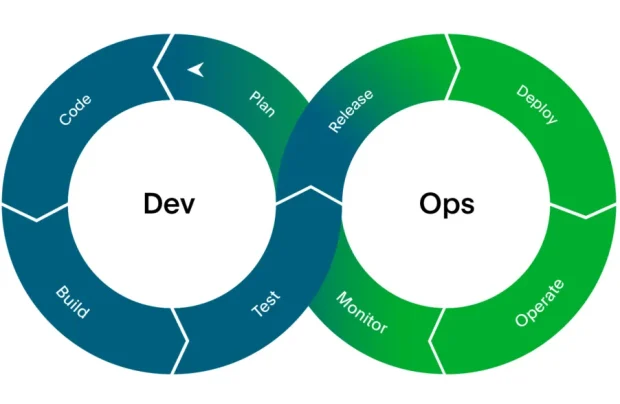Beginner's Guide to DevOps: Simplifying the Essentials
In the fast-paced realm of software development, embracing methodologies that foster collaboration, speed, and efficiency is essential. One such methodology that has gained immense popularity in recent years is DevOps. In this post, we’ll embark on a journey to unravel the basics of DevOps, shedding light on its principles and the transformative impact it can have on your development lifecycle.
What is DevOps?
DevOps, a portmanteau of “development” and “operations,” is a set of practices that aims to break down silos between development and IT operations teams. The goal is to enhance communication, collaboration, and automation in the software development process, resulting in a more streamlined and efficient workflow.

Key Principles of DevOps
Collaboration
DevOps emphasizes the importance of collaboration between traditionally isolated teams. Developers and operations professionals work hand-in-hand throughout the entire development lifecycle.
Automation
Automation is a cornerstone of DevOps. By automating manual processes, teams can achieve faster and more reliable software delivery. This includes automated testing, deployment, and infrastructure provisioning.
Continuous Integration/Continuous Deployment (CI/CD)
CI/CD is a DevOps practice that involves frequent and automated testing and deployment of code changes. This ensures that software is always in a releasable state, leading to quicker and more reliable releases.
Benefits of Adopting DevOps Practices
Faster Time to Market
DevOps accelerates the development lifecycle, allowing teams to deliver features and updates more rapidly, keeping pace with the dynamic market demands.
Improved Collaboration
Breaking down barriers between teams fosters a culture of collaboration. Communication flows seamlessly, leading to increased innovation and problem-solving.
Increased Efficiency
Automation and streamlined processes result in greater efficiency. Reducing manual interventions minimizes errors and frees up valuable time for teams to focus on strategic tasks.
Version Control with Git
Begin by implementing version control with Git to manage code changes, track modifications, and facilitate collaborative development.
Exploring CI/CD
Dive into the world of Continuous Integration and Continuous Deployment, implementing tools like Jenkins or GitLab CI to automate testing and deployment processes.
Infrastructure as Code (IaC)
Explore Infrastructure as Code (IaC) principles using tools like Terraform or Ansible to manage and provision infrastructure through code.

Conclusion
As we conclude this introduction to DevOps, it’s clear that adopting DevOps practices can lead to a paradigm shift in the way software is developed and delivered. In the upcoming posts, we’ll delve deeper into specific DevOps tools, methodologies, and real-world case studies to provide you with a comprehensive understanding of this transformative approach.